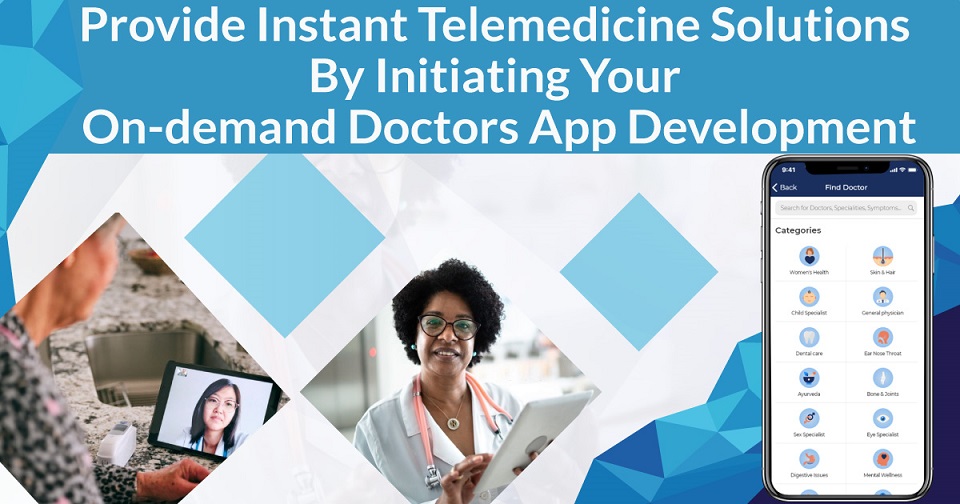Amid the pandemic situation, people are relying on on-demand apps for essentials. The term ‘essentials’ in this regard refers predominantly to food and grocery. While some add alcohol to the list as well, don’t you think a key essential is missing? Exactly! Medicines. As simple as it may sound, a considerable extent of people depend on medications and have administered drugs as per physicians’ advice in their daily routine.
People are afraid to step out, and pharmacy stores are available 24×7. Wait, something isn’t right here? What’s the point for a druggist to be open when people are reluctant to stay put? There’s an immediate need to bridge this gap between pharmacy store owners and customers. Leveraging the online medium and Uber’s business model in this scenario can ease the tension in the air.
If you are an entrepreneur eyeing to launch an Uber for Pharmacy delivery app, this blog is right for you. Here, we’ll discuss the feature-set, workflow, and the revenue models to integrate into your application.
Integrate a seamless workflow
While developing the app, provide the utmost care to its workflow as it directly impacts the user experience. Let’s discuss the seamless workflow of the pharmacy delivery app here,
- Customers register with the app and enable their location settings.
- They get to browse pharmacy stores available near their locality.
- Customers can either upload the prescriptions and request medicines or add medicines to their cart directly.
- Upon adding different drugs, they review the cart finally and proceed to checkout.
- Customers pay for their orders via numerous payment gateways like credit/debit cards, digital wallets, etc.
- Pharmacy store owners receive customer requests in a flash. They can either accept or turn down requests based on their availability.
- Once the store owners accept the orders, delivery drivers are assigned to pick-up the order.
- Delivery drivers reach the pharmacy stores, pick-up the orders, and drop the orders at customer locations. During the entire process, delivery drivers are guided with in-app navigation.
- Customers receive the order and share their experience in the form of ratings and reviews.
- The admin processes customer payments and transfers them to delivery workers and store owners effortlessly.
Developing a feature-packed front-end
It is the features that interact with the audience, transforming your ideas into customer expectations. In developing the app, you need to work on four separate entities. They include,
- Customer app
- Delivery driver app
- Pharmacy store owner app
- Admin panel
Features of Customer app:
- Registration: Customers either sign up with the platform or log in via their social media handles.
- Search and filter: Customers can search for medicines or pharmacy stores. They can narrow down their results with filter options.
- Real-time tracking: Customers can track delivery executives carrying their orders with the real-time tracking option.
- Multiple payment options: Customers can pay for their orders via numerous payment gateways like credit/debit cards, net banking, etc.
- Push notifications: Customers get regular updates on their orders, promo codes, etc., via push notifications.
- Ratings and reviews: Customers can rate their order experience on a scale of 1-5 or share them as reviews.
Features of Service provider app (Delivery Driver+Pharmacy Store Owner):
- Registration and verification: Service providers register with the app by providing essential details. They can upload relevant documents for verification.
- Availability toggle: Service providers can switch between their working hours with this toggle functionality.
- Accept/Reject orders: Service providers can either accept or reject customer requests based on their preferences.
- Earnings profile: Service providers can view their daily/monthly/yearly earnings through an intuitive dashboard.
- Order management: Service providers get instant updates on upcoming orders, order processing, etc., via an order dashboard.
Features of the Admin panel:
- God’s eye view: The admin can regulate the entire app activity from a single place.
- Real-time analytics: The admin can generate detailed reports on various metrics, paving the way for informed business decisions.
- Verify service providers: It is the responsibility of the admin to verify service providers for their authenticity.
- Manage customer queries: The admin resolves customer queries and issues with a captivating customer management dashboard.
Monetize your app accordingly
Every move or step you take during development is aimed at two aspects – benefitting people and generating revenue. When you can benefit people, you can generate income via various sources. Some of the most popular monetization strategies worth-considering in an On-demand pharmacy delivery app include,
- Commission fees: Pharmacy store owners pay a fixed percentage of customers’ payments as paid commissions.
- Delivery charges: Customers who enjoy doorstep deliveries give up a certain fee during payment as delivery charges.
- Subscription plans: Roll out the premium version of the app for fixed subscription charges. Customers who pay for it enjoy enticing benefits.
- In-app ads: By displaying third-party ad banners, you can levy ad charges based on views, clicks, impressions, etc.
Conclusion
The COVID-19 pandemic is fueling the need for medicine delivery services. An entrepreneur with an exclusive Uber for Pharmacy delivery app can capitalize on the demanding situation. All it takes to lure the audience towards the platform is to have a seamless workflow and a feature-packed app. With multiple monetization strategies, do not hesitate to initiate your pharmacy delivery app development today!


